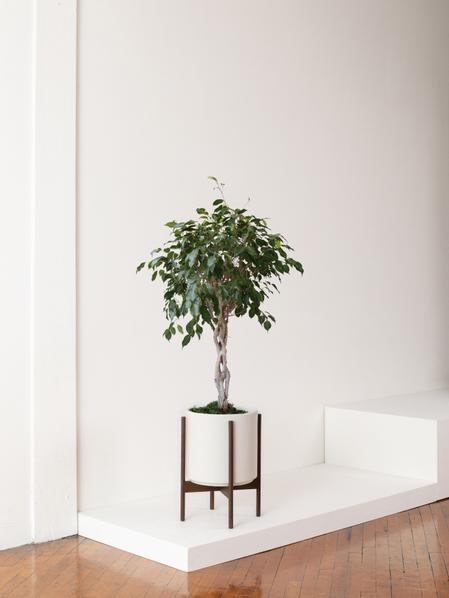
Questions about the Ficus Benjamina 4 ft tall Extra Large Mid-Century
Airy and elegant with a gently braided trunk, the Ficus Benjamina AKA the Weeping Fig is a beloved staple of timeless interior style. With its gently cascading branches and whimsical canopy of feathered leaves, this graceful houseplant brings unique organic beauty to any space.
How fast does the Ficus benjamina grow?
The Ficus benjamina, commonly known as the Weeping Fig, has a moderate to fast growth rate when given the right care. Indoors, this elegant, glossy-leafed plant can add 1–2 feet of height per year and develop a full, bushy canopy if provided with bright, indirect light, consistent watering, and occasional fertilization. Outdoors in warm climates, it can grow much faster, reaching heights of 50 feet or more over time. Regular pruning helps maintain its shape and encourages healthy, vigorous growth.
Does the Ficus benjamina require a lot of light?
Yes, the Ficus benjamina (Weeping Fig) requires plenty of light to grow well. Bright, indirect light is ideal for maintaining healthy foliage and preventing leaf drop. While it can tolerate medium light conditions, growth will be slower, and the plant may become sparse over time. Avoid prolonged exposure to direct midday sun, which can scorch the leaves. For the best results indoors, place your Weeping Fig near an east- or south-facing window filtered with sheer curtains, or supplement with grow lights if natural light is limited.
How often should I water my Ficus benjamina?
The Ficus Bejamina or Weeping Fig plant prefers evenly moist but never waterlogged soil. Water your Ficus benjamina when the top 1–2 inches of soil feel dry to the touch, typically every 1–2 weeks indoors depending on temperature, humidity, and light. Reduce watering in winter when growth slows. Overwatering is one of the most common causes of stress for this plant, often leading to leaf drop or root rot, so always ensure the pot has good drainage and remove excess water from saucers.